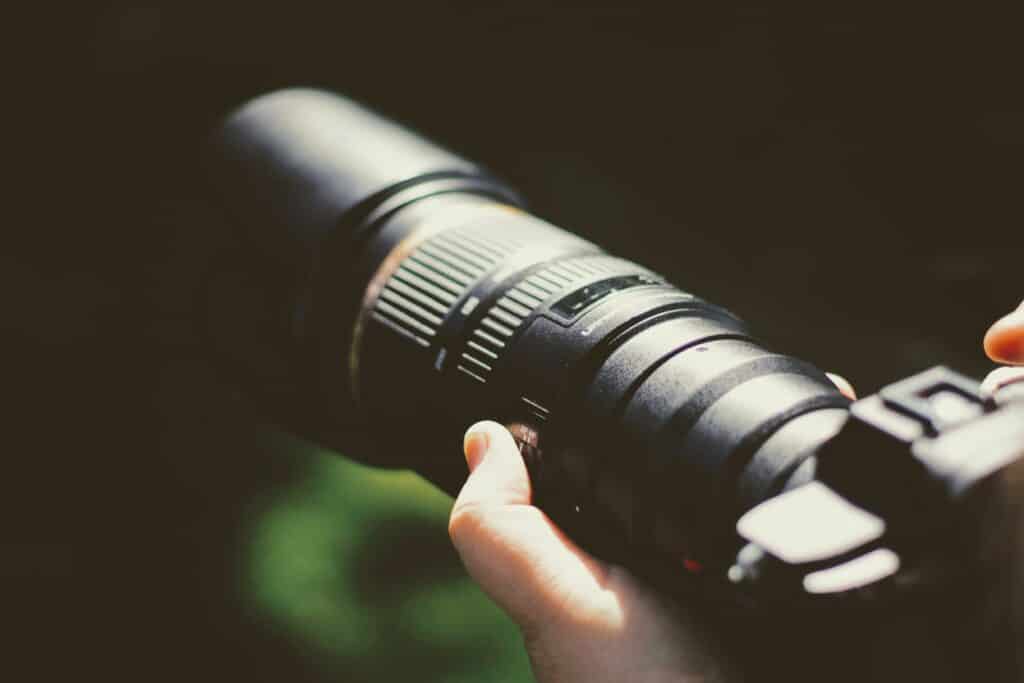- Total22
- Facebook14
- Pinterest2
- Email6

We've all been there. You have a great shot lined up but weren't quite close enough to capture the detail you wanted. Then that Madagascar pochard flies off into the distance before you can even wish you had a longer zoom lens.
Sadly due to budget constraints, that fancy new zoom lens is more out of reach than a rare duck from Madagascar. So how can you get a bit more zoom power to improve your portfolio? One way is by investing in a quality teleconverter.
What Is A Teleconverter?
Teleconverters increase the focal length of your lens. For example, using a 1.4x extender will increase your focal length by 40%. Or if you use a 2x extender, you'll double your focal length.
In the most basic terms, a teleconverter is a magnifying lens between the camera body and lens. It can come in useful for many kinds of photography, including wildlife, sports, fashion, or paparazzi-type work if you happen to be chasing A-listers for a side hustle or living.

Why Use A Teleconverter?
A teleconverter is much more affordable than a new lens. It can turn a power lens like the Canon 70-200 mm f/4 into an even more impressive piece of glass that can zoom in much closer to show more detail and give images a new perspective.
If you also have the Canon 70-200 mm f/4, you might use it for nature, sport or wedding photography. There are many situations where increasing your focal length can be a great advantage. For times when it's impossible to move closer to your subject in time, a teleconverter can save the day.
If you added a 1.4x converter to the Canon 70-200 mm f/4 lens, your maximum focal length would be 280 mm, which is a considerable boost. If you used the 2x converter, you would have a 140-400 mm zoom in your hands. Now you really can get up close and personal.
You could get a great close-up shot of the exhausted expression on an athlete's sweaty face moments after they cross the finish line with an extender attached to your camera. This versatile camera accessory helps you up your game without much effort. Otherwise, you might be carrying a longer, heavier lens, an extra camera body or need time to change your lens and probably losing some shots.
You should always use a teleconverter that matches the brand of your camera. For Canon users, you have 1.4x and 2x options for your DSLR.
For Nikon users, you have 1.4x, 1.7x and 2x versions. Other major camera brands also have matching teleconverters.
Not all extenders are compatible with all lenses. Always check with the supplier to make sure you are buying the right teleconverters, also known as extenders or multipliers.
Recommended Extenders
Canon Extender EF 1.4X III
This beauty of an extender is compatible with a long list of Canon telephoto lenses. It extends the focal length 1.4x times and boasts minimal chromatic aberration.
Fancy features include a built-in microcomputer for communication between the camera body, lens and extender and lens placement and coatings to minimize ghosting and flare. It is strong, dust-proof and water-resistant.
Nikon AF-S Teleconverter TC-20E III
The stellar AF-S Teleconverter doubles the focal length of a wide range of Nikon lenses. It is a high-performing and impressive teleconverter that achieves results.
Sigma 1.4X Teleconverter EX APO DG
Sigma has designed this Teleconverter to help photographers using Sigma lenses and reviews confirm it is an excellent accessory. Multi-layer coating reduces ghost and flaring makes this a solid choice.

Are There Any Cons?
Yes, when you use a teleconverter, you reduce your maximum aperture. The 1.4x extender causes a decrease of one-stop in the maximum aperture of the lens, while the 2x extender loses two stops. If you are shooting in low light, you might notice this. If you have the blessings of a bright sunny day or a light-filled room, it probably won't bother you so much.
You can be prone to camera shake and possible blurred photos as you extend the focal length of your lens. To combat this issue, you can use a faster shutter speed or use a tripod or monopod to stabilize your camera.
Your focus speed will be slightly slower once you add a teleconverter to your camera. Again in low light, this will be more noticeable. Autofocus functions might not work at all if you have a lower-end DSLR camera. To solve this problem, you can use manual focus mode. If you have been using autofocus mode primarily, it might seem overwhelming to switch to manual mode for focusing. Practice makes perfect, and if you can master this skill, it will come in useful for the rest of your life. Many people say the manual focus is sharper and gives you more control of your imagery. So this is a con that can lead to a pro. As you realize this silver lining in the cloud, you might be able to zoom in and get a photo of the pot of gold under the rainbow!
The Overall Verdict
Using extenders or teleconverters is a great way to extend your focal length and is more affordable than buying a new lens.
But you are a little restricted since your maximum aperture is reduced. If you have a good quality lens and great light to start with, the impressive results might far outweigh the maximum aperture reduction. Camera shake and focus speed can be negative factors, but there are reasonable solutions.
Extenders are a great way to get better photos without spending a bomb on a new lens. If you are considering buying one we are sure you won't regret it. If you are on the fence about buying a new lens or using a converter, maybe you should hire a converter to see the results.
- Total22
- Facebook14
- Pinterest2
- Email6




